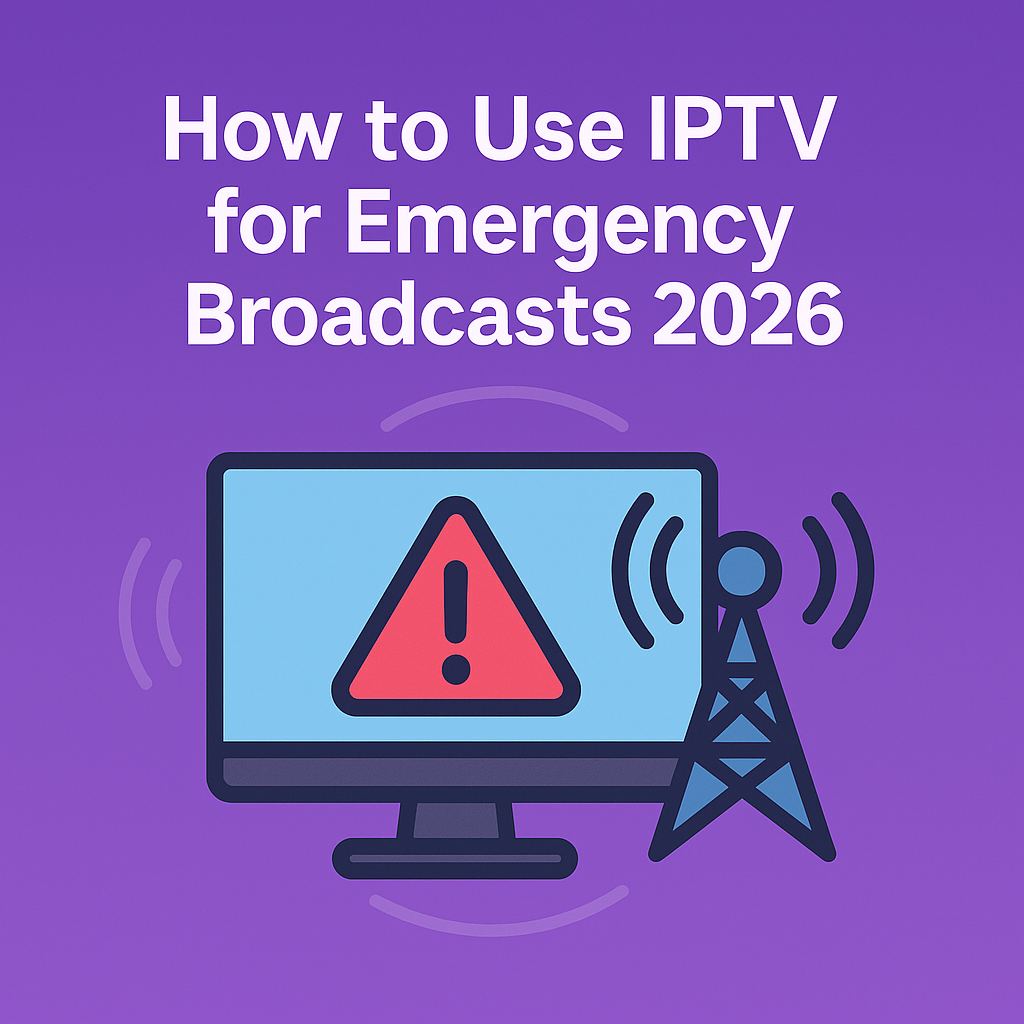How to Use IPTV for Emergency Broadcasts 2026

Introduction
In 2026, IPTV is no longer just an entertainment platform — it’s a critical communication tool. Governments, organizations, and emergency services now rely on IPTV for emergency broadcasts to reach millions instantly. Whether it’s natural disasters, security warnings, or urgent public alerts, IPTV provides a fast, reliable, and secure way to deliver real-time information across regions and devices.
Why IPTV Matters in Emergency Broadcasting
Traditional broadcast systems like radio or satellite often face delays or limited reach. IPTV, however, transmits emergency alerts directly over the internet to smart TVs, mobile devices, and even public display systems. Because it’s IP-based, it allows authorities to target specific regions, languages, or audiences instantly — a key advantage during time-sensitive events.
In short, IPTV makes emergency communication faster, smarter, and more interactive.
How IPTV Emergency Broadcast Systems Work
IPTV emergency systems integrate broadcasting, networking, and automation. Here’s how they operate step by step:
- 1. Alert Trigger: A command center activates an emergency message manually or automatically (e.g., weather alert, evacuation warning).
- 2. Message Encoding: The system converts the alert into a digital stream compatible with IPTV protocols.
- 3. Target Delivery: Messages are pushed to IPTV networks, mobile apps, or smart displays in the affected area.
- 4. User Display: Viewers receive a pop-up alert, scrolling ticker, or full-screen emergency feed — depending on severity.
- 5. Real-Time Updates: Information is continuously updated or replaced as the situation evolves.
Technical Setup & Requirements
Setting up an IPTV emergency broadcast system requires a mix of stable infrastructure and secure integration. Here’s what’s needed:
- Reliable IPTV Provider: Choose a professional-grade provider like CCCam2 Premium IPTV that supports multicast streaming and real-time alerts.
- Encoding Hardware: Use encoders that support low-latency compression such as H.265 or H.266 for instant delivery.
- Redundant Servers: Backup servers ensure messages are delivered even if the main server fails.
- Content Management System (CMS): To automate message display, scheduling, and region-based targeting.
- Network Priority Rules (QoS): Configure routers to give emergency streams top priority during congestion.
Advantages of IPTV Emergency Broadcasts
- Instant Delivery: Messages reach millions simultaneously across all connected screens.
- Two-Way Communication: Viewers can respond, confirm safety, or report incidents interactively.
- Regional Targeting: Send localized alerts in multiple languages for accuracy and clarity.
- Multi-Platform Coverage: IPTV alerts can appear on smart TVs, mobile devices, or large public screens.
- Cost Efficiency: Lower operational costs compared to traditional broadcast systems.
Common Mistakes to Avoid
While IPTV offers unmatched emergency broadcasting potential, poor implementation can limit its effectiveness. Avoid these mistakes:
- Overreliance on Internet Connectivity: Always have backup channels like radio or SMS in case of full network failure.
- No Redundancy Plan: Duplicate servers and content mirrors should always be in place.
- Ignoring Localization: Alerts must include local languages and accessible formats (text-to-speech, captions).
- Lack of Testing: Conduct regular system drills to ensure readiness during real emergencies.
Reality Check
Emergency IPTV systems are not science fiction — they are already being deployed by smart cities and national agencies in 2026. However, reliability depends on choosing the right infrastructure. Solutions like CCCam2 Premium IPTV provide the uptime, bandwidth, and scalability needed to handle sudden spikes in demand during crises. Remember: an emergency alert system is only as strong as its delivery network.
Final Verdict
Using IPTV for emergency broadcasts in 2026 transforms how governments and organizations communicate critical information. With instant delivery, two-way interaction, and regional targeting, IPTV ensures that every message reaches its audience in time. The future of public safety broadcasting lies in IP-based systems — fast, intelligent, and always connected.
FAQ Section
1. Can IPTV replace traditional emergency broadcasting?
Not entirely. IPTV enhances it with instant internet-based delivery but should always complement radio or cellular alerts for redundancy.
2. How fast can IPTV deliver emergency alerts?
In most systems, alerts appear on-screen within 2–5 seconds after activation, ensuring real-time communication.
3. Is IPTV secure for public alerts?
Yes. With encryption, authentication, and server redundancy, IPTV alerts can be broadcast safely without data leaks.
4. Who uses IPTV emergency systems?
Governments, universities, hospitals, and large enterprises already use platforms like CCCam2 Premium IPTV for rapid information dissemination during emergencies.






